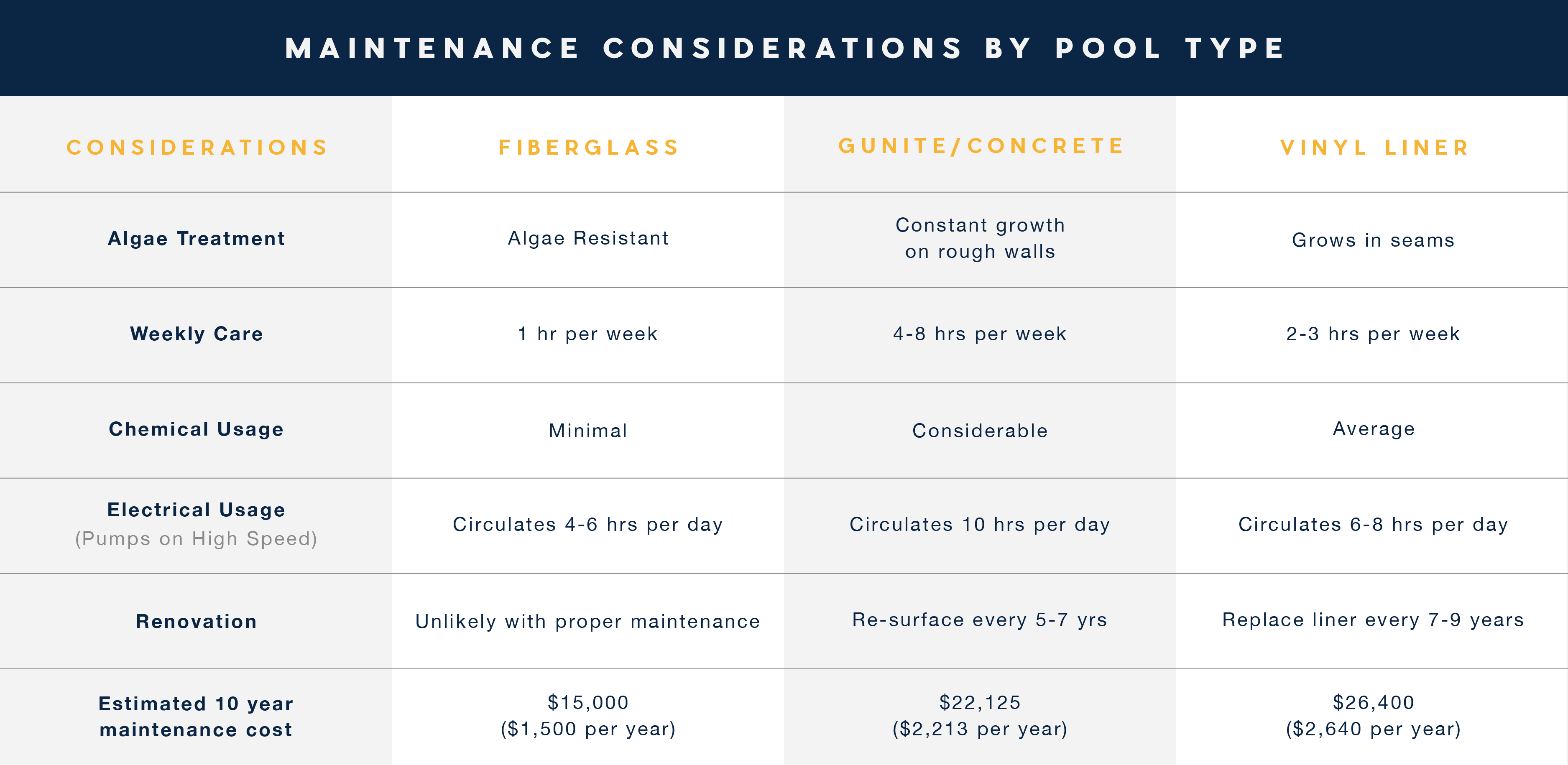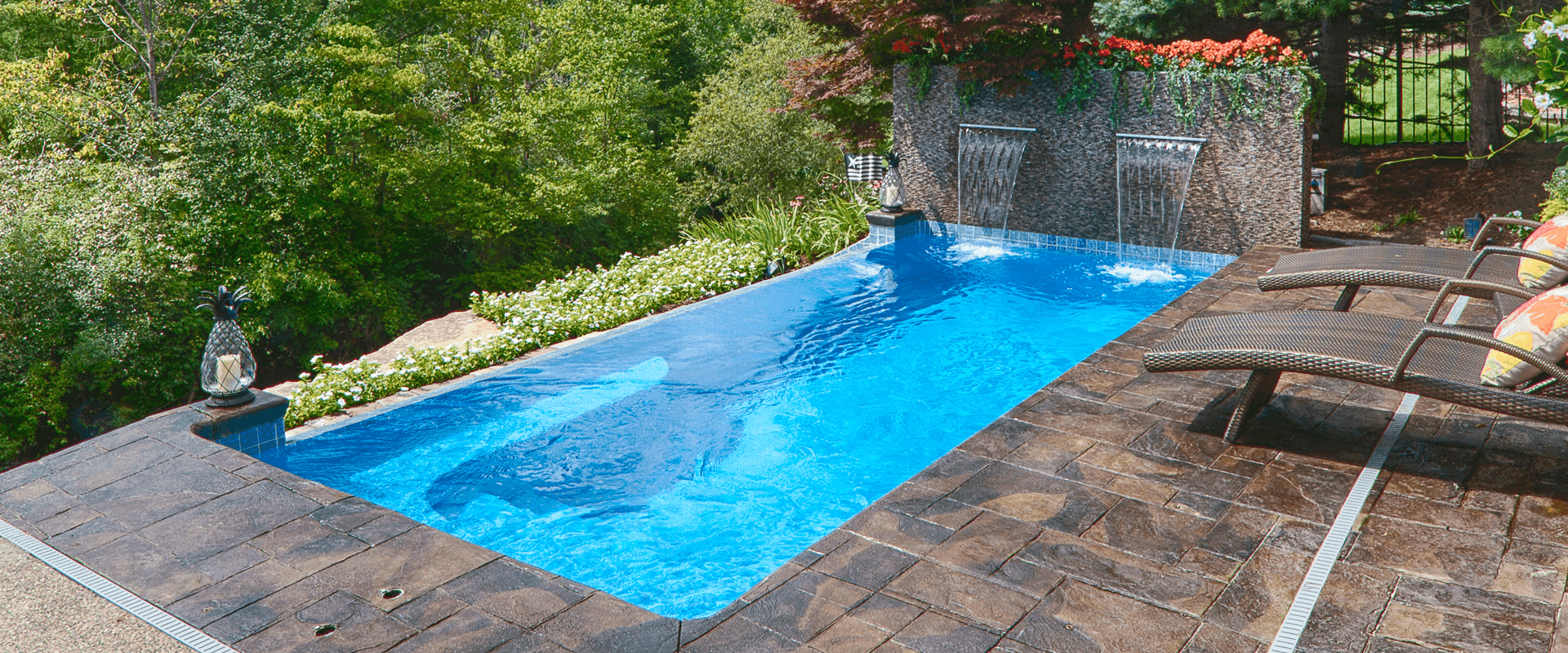877-929-7665
How Much Does It Cost to Resurface Your Pool?
Depending on the pool’s age and when pool maintenance gets away from pool owners, the pool’s surface will show it, leading to questions like, “Is it worth resurfacing a pool?” or “How much does it cost to resurface your pool?” Like so many questions homeowners ask, the answer to these questions is, “It depends.” Let’s start by breaking down pool resurfacing costs by pool type. (We should also note: these prices listed here are based on the experiences of our team as well as independent dealers within our network.)
About Fiberglass Pool Maintenance
Fiberglass composites have taken off as the material of choice for many builders and homeowners. The market share for fiberglass pools more than doubled in the early 2000s and has shown steady growth since then. According to Business Research Insights, the market expects a 5.5 % compound annual growth rate (CAGR) by 2031. Several factors account for the popularity of fiberglass, including the development of better fiberglass manufacturing processes and the incorporation of attractive pool features like tanning ledges, wrap-around benches, and beach entries.
The gel coat and structure of fiberglass are incredibly durable. A fiberglass pool may last for many years without needing resurfacing. In other words, if properly maintained, it can stay in beautiful working order for as long as you are in your home. Fiberglass is not maintenance-free, but the pool industry generally credits it for requiring less maintenance than other inground pool options. As an added benefit, fiberglass pools are the most environmentally friendly inground pools.
Fiberglass Pools Resurfacing Costs
Resurfacing fiberglass pool costs may vary as you have a couple of pool resurfacing options. One is thermoplastic coating. Thermoplastic coating takes just a few days, and you can fill the pool immediately. You can choose a selection of colors that work for either fiberglass or concrete pools. Depending on the pool size, the cost can range from $16,000 to $26,000.
The other option for resurfacing your fiberglass pool is epoxy paint. Epoxy paint is relatively simple and can deliver a quality look for concrete and fiberglass. However, it only works on bare surfaces, might only last five years or so, and requires around two weeks to cure. It can be done between $2,500-$3,000, and you may even be able to do it yourself.
About Gunite Pool Maintenance
Gunite, or concrete pools, require the most resources for maintenance. The more expensive regular maintenance requirements for inground pools include chemical usage, surface care, and electrical load. Gunite pools typically need to be resurfaced as soon as five to seven years, depending on your climate, maintenance regimen, and water chemistry balance. The surface is susceptible to algae, requiring more maintenance and chemical use.
Gunite Pool Resurfacing Costs
When resurfacing is needed, you may get away with a relatively inexpensive epoxy paint option if no paint is on the surface. Otherwise, you probably need to go the route of pool tile, aggregate, or pool plaster (Note: if you’ve heard of plastering a pool, replastering a pool is not the same as resurfacing). These options often land in the $15,000-$25,000 range or more, with tile generally being the highest cost. Some homeowners are replacing their older gunite pool with a fiberglass pool.
About Vinyl Liner Pool Maintenance
Vinyl liners can be very sensitive to imbalances in water chemistry. Improper water balance can cause the liner to fade, wrinkle, or deteriorate more quickly. The seams are a place where algae can more easily grow, requiring more chemical use. Vinyl liners are also more prone to tearing, which is something to watch if you have pets. Even well-maintained liners usually need to be replaced every seven to nine years.
Vinyl Liner Pools Resurfacing Costs
Each time you replace the vinyl liner, your costs range from $6,000 to $12,000. With a rip, you may be able to patch at a cost of a few hundred dollars. If the presence of algae becomes a problem, you may need to enlist the support of a professional pool cleaner.
Regardless of pool type, if you’re actively searching for “pool resurfacing near me,” contacting a pool builder in your area is a good place to start for a more accurate quote. If you want to talk to someone about how much it costs to resurface your pool, don’t hesitate to contact an independent dealer in your area for more information.

More on Comparing Pool Types
Has all this talk made you want to learn more about the different pool types? If you want to dig deeper into comparisons, download our eBook that does just that. The eBook compares factors like upfront cost, maintenance time and cost, installation time, warranties, available features, and more.
